Environmental Engineering Reference
In-Depth Information
10,000
Natural Regina clay
Compacted Regina clay
Eston clay
1,000
3 : 1
2 : 1
1 : 1
100
10
10
100
1,000
Uncorrected swelling pressure,
P
s
(kPa)
Figure 14.21
Change to measured swelling pressure as result of applying correction for sam-
pling disturbance.
each succeeding series of tests. Figures 14.23-14.27 show
the swelling pressure measurements and compression
curves as the soil was compacted to lower densities while
having initial higher water contents. Figures 14.24-14.27
also show the slope of the rebound curves. The slope of the
rebound curves,
C
s
, was approximately 0.12. A line drawn
through the void ratios corresponding to “after-free-swell”
conditions under various surcharge loads results in a
slightly steeper rebound curve.
Singhal (2010) performed a similar set of compara-
tive swell pressure tests on expansive clay in Arizona
(Fig. 14.28). The soil had a plastic index of 52. The
load-back swell pressure is the pressure required to return
the soil to its initial void ratio after the soil has swelled
under its initial surcharge pressure. The load-back swelling
pressures ranged from 410 to 480 kPa.
Table 14.3 Volume-Mass Properties and Swelling
Pressures for Series of Oedometer Tests on Regina Clay
Swelling
Void
Dry Unit
Water
Pressure
Series Ratio Weight, kN/m
3
Content, % Range, kPa
1
0.67
16.0
22
1570-2160
2
0.79
14.9
27
640-980
3
0.94
13.8
32
200-350
4
1.05
13.0
37
120-180
5
1.29
11.7
45
30-80
6
1.48
10.8
51
15-30
Source:
From Gilchrist (1963).























Search WWH ::

Custom Search